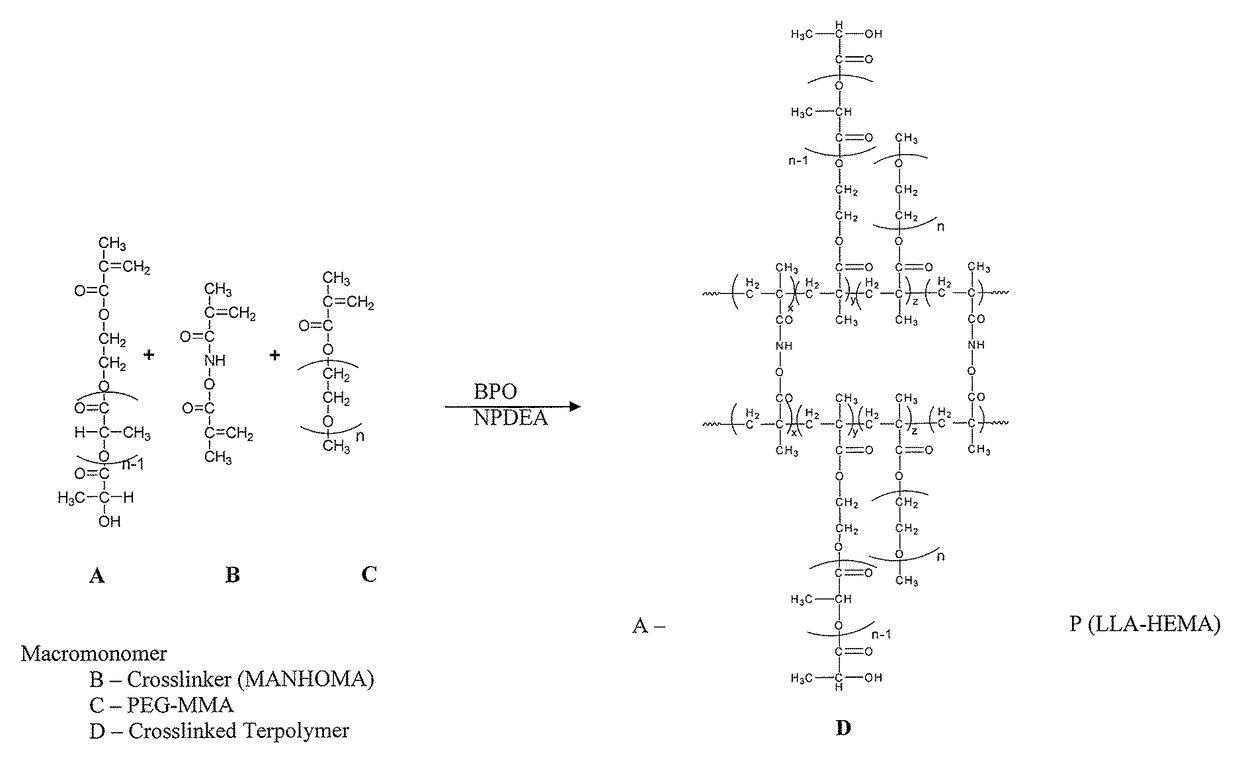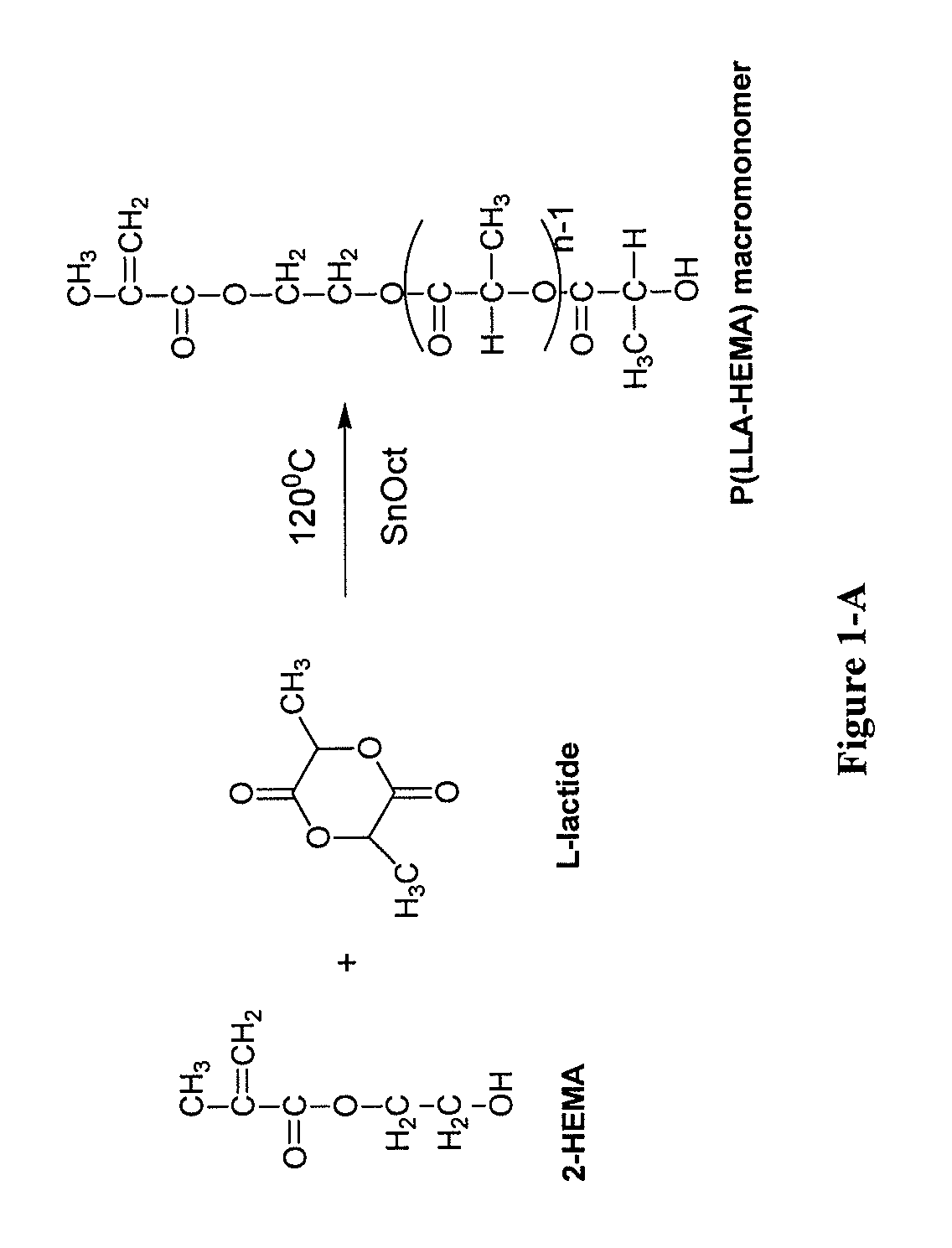Biodegradable stealth polymeric particles fabricated using the macromonomer approach by free radical dispersion polymerization
a technology of free radical dispersion and macromonomer, which is applied in the direction of microcapsules, drug compositions, transportation and packaging, etc., to achieve the effects of increasing its versatility, and reducing the risk of contamination
- Summary
- Abstract
- Description
- Claims
- Application Information
AI Technical Summary
Benefits of technology
Problems solved by technology
Method used
Image
Examples
example 1
Synthesis of Methacrylate Terminated Poly(Lactide) (PLA) Macromonomer (85LLA:15HEMA)
[0144]Methacrylate terminated macromonomer was prepared by the ring-opening polymerization of L-lactide in the presence of HEMA as initiator and stannous octoate as catalyst using a modified published method. Briefly, L-lactide (6.0234 g, 0.0418 mole), HEMA (900 μL, 0.00738 mole) and 3 drops of stannous octoate were placed in a 50 mL round-bottom flask equipped with a magnetic stir bar. The reaction flask was kept under vacuum for 10 minutes and polymerization was carried out in an inert atmosphere by flushing the flask with nitrogen gas for 24-38 hours on a silicone oil bath kept at 80-160° C., as in FIG. 1-A.
[0145]The polymer mass was dissolved in chloroform and extracted with 0.1M HCl to remove the catalyst followed by washing with deionized water. The pure polymer dissolved in the organic layer was then precipitated with excess cold methanol, collected by filtration and dried in a vacuum oven at ...
PUM
| Property | Measurement | Unit |
|---|---|---|
| Fraction | aaaaa | aaaaa |
| Efficiency | aaaaa | aaaaa |
| Ratio | aaaaa | aaaaa |
Abstract
Description
Claims
Application Information
 Login to View More
Login to View More - R&D
- Intellectual Property
- Life Sciences
- Materials
- Tech Scout
- Unparalleled Data Quality
- Higher Quality Content
- 60% Fewer Hallucinations
Browse by: Latest US Patents, China's latest patents, Technical Efficacy Thesaurus, Application Domain, Technology Topic, Popular Technical Reports.
© 2025 PatSnap. All rights reserved.Legal|Privacy policy|Modern Slavery Act Transparency Statement|Sitemap|About US| Contact US: help@patsnap.com



